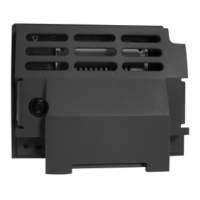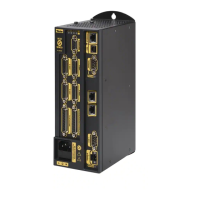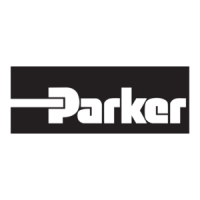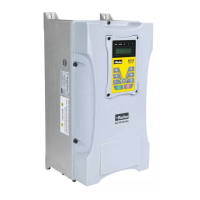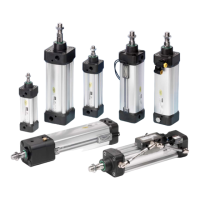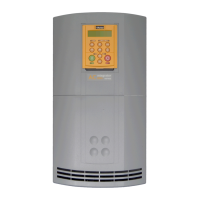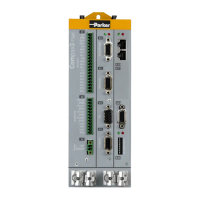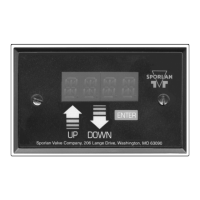Parker Hannifin
For example a 0-10V DAC would take values of 0-32767, and a ±10V
device would take values of –32768 to 32767. However, a ±5V
device would also take values of –32768 to 32767. To translate from
this raw binary number to the range and units being controlled or
measured, ACR9000 employs entered offsets and gains.
An offset has the same units as the user units of the analog value, for
example volts or milliamps, and translates the center of the analog
range to a value that allows a gain to be applied. A DAC gain has
the units of full-scale binary resolution per user unit. The DAC range is
16-bit or 65536 DAC counts, regardless of the actual DAC resolution.
For example, suppose a 12-bit DAC asserts –10V to +10V, where a
value of 32768 will assert –10V and 32767 will assert +10V. In this
case, the offset is 0V, and the gain is (65536/20 = 3276.8). If the user
wants to assert 7.5V, a value of 7.5 *3276.8 = 24576 must be written
to the DAC.
The process is different for an ADC. An ADC gain has the units of full-
scale user units. For example, if the input of the analog device were
a maximum of +/- 10V, then the gain would be 10. Alternatively, if
the input of the analog device were a maximum of +/- 20ma, then
the gain would be 20. Internally the raw analog count value is
normalized such that +/-1.0 represents full scale positive and
negative before the user gain is applied, and user offset added.
The ACR9000 automatically performs this arithmetic so that the
analog values appear to the user as user units, not raw DAC or ADC
counts. The user must know the analog range of the DAC or ADC in
order to calculate the appropriate gain for entry into the ACR9000
parameter structure. Offset values will usually be zero unless an
actual physical offset is required. ACR9000 uses default values for
gains and offsets if the user does not overwrite the defaults. All
default-offset values are zero. All default ADC gains are ten (10.0),
and all default DAC gains are 3276.8.
The DAC and ADC values, gains, and offsets are accessed in blocks
of eight parameters each, as shown in the table below. Since each
node may accommodate all 32 analog inputs and outputs, a range
of 512 bits is reserved for each node. The parameter numbers
correspond to a range of 33280-33791 for the lowest numbered
node, 33792-34303 for the next node, etc. The table below shows the
parameter mapping for the lowest number node. For each higher
number node, add 512.
138 Programmer’s Guide
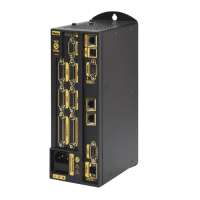
